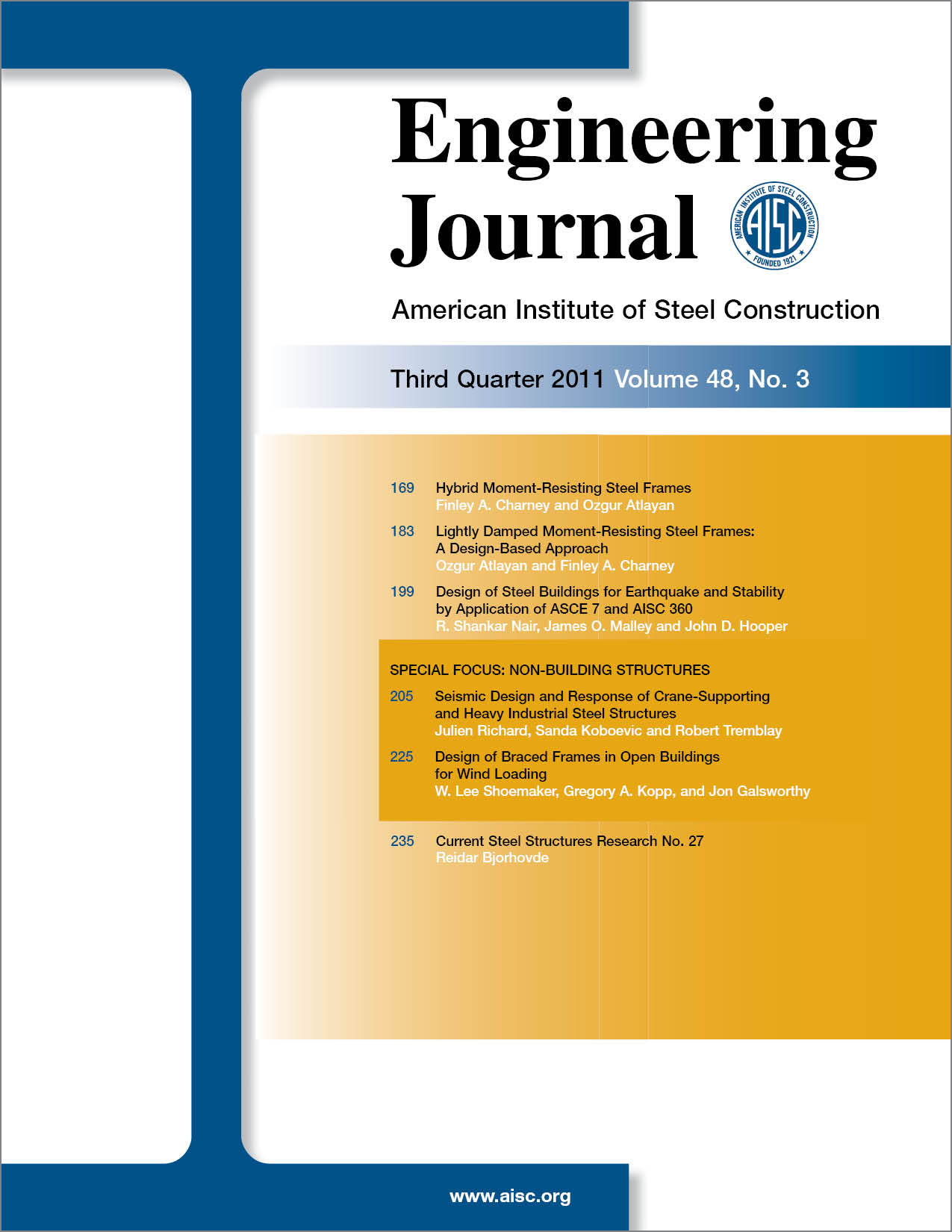Lightly Damped Moment-Resisting Steel Frames: A Design-Based Approach
DOI:
https://doi.org/10.62913/engj.v48i3.1015Keywords:
seismic design and performance, viscous fluid dampers, incremental dynamic analysisAbstract
The current U.S. seismic design provisions for steel moment-resisting frames generally result in structures for which stiffness is the controlling factor in the design. The design for stiffness often provides considerable overstrength, which reduces rotational ductility demand on the plastic hinges in the structure. Even though the reduction in ductility demand may be considerable, the design provisions do not allow the detailing rules to be waived, resulting in designs that may not be economically optimized. This paper presents the results of a study in which a variety of steel frames were designed for strength and that used added energy dissipation in the form of linear viscous dampers to control the drift. The goal of the study was to provide only enough damping to control the drift, and to this end, it was found that total system damping of 10% critical was sufficient. As shown in the paper, the added damping provided the required drift control and had the added advantage of minimizing the dispersion, which typically occurs in response history analyses carried out under several appropriately scaled ground motions. Such dispersion control is illustrated through incremental dynamic analysis of damped nine-story buildings in Seattle, Washington.

